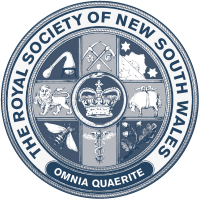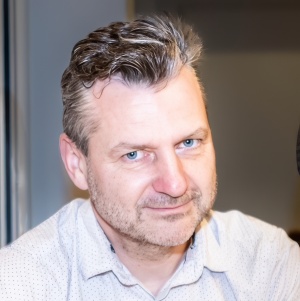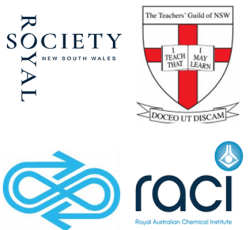 “RNA and me: from the origins of life and nanomedicine to building an RNA ecosystem”
“RNA and me: from the origins of life and nanomedicine to building an RNA ecosystem”
Professor Pall Thordarson FRSN
Director, UNSW RNA Institute
UNSW Sydney
Date: Wednesday, 5 June 2024, 6.30 pm AEST
Venue: Dixson Room, Mitchell Building State Library of NSW, Shakespeare Place, Sydney
Video presentation: YouTube video
All are welcome
Summary: In this talk, Pall Thordason will discuss his quest for broadening our understanding of how life originated and the RNA world theory and then his work within the burgeoning nanomedicine sector, and how these conspired to throw him into the deep end of the rapid development of a RNA ecosystem in Australia.
The RNA world idea, within the “origin of life” field, centres around the observation that the RNA molecule can do both: carry information (e.g., mRNA) and perform catalytic reactions (e.g., the ribosome – the protein synthesis factory in our cells). For the RNA world hypothesis to be true, there must have been some “intermediate” complex assemblies between simple RNA building blocks and fully functional RNA catalytic/self-replicating systems. Having worked on peptide gels for over a decade, he and his team noted that recent studies in biology suggested that peptides and RNA readily form gel-like structures under certain conditions. They have therefore been investigating if gel formation from short RNA and peptide molecules could form gel-like aggregates and ultimately, if these could provide a pre-biotic chemistry-relevant path for a proto-ribosome to chemically evolve from the pre-biotic soup of chemicals.
Indirectly leading on from the above, Pall entered the field of nanomedicine over a decade ago with an initial focus on targeted delivery with nanoparticles. The potential importance of understanding better how peptides could also aid in the delivery of RNA therapeutics was not lost on his team and therefore, some time ago, he started to argue the case for more investment in RNA therapeutic development. Having first approached our state government in 2019, the recent pandemic and the successful deployment of mRNA vaccines then enabled us to rally scientists for universities and medical research organisations from across the state, and work with like-minded groups in other states, to advance the vision of making Australia a powerhouse in the emerging RNA ecosystem.
Pall (Palli) Thordason obtained his BSc from the University of Iceland in 1996 and a PhD in Organic Chemistry from The University of Sydney in 2001. Following a Marie Curie Fellowship in the Netherlands, he returned to Australia in 2003 and was then appointed at UNSW Sydney in 2007 as a Senior Lecturer where he became a full Professor in 2017. He is the Director of the UNSW RNA Institute and the President of the Royal Australian Chemical Institute (RACI). He is also a program leader for the NSW RNA Production and Research Network and leads the NSW RNA Bioscience Alliance on behalf of the NSW Vice-Chancellor’s Committee.
Palli has published over 140 referred papers, including in prestigious journals such as Nature and Nature Nanotechnology. His research interest ranges from Nanomedicine, RNA, and peptides to Supramolecular and Systems Chemistry. He is focused on advancing our understanding of how molecules interact with one other and ‘self-assemble’, and how self-assembly can then be harnessed to create novel functional materials and systems. He has received a number of awards including the 2012 Le Fèvre Memorial Prize from the Australian Academy of Science for outstanding basic research in Chemistry by a Scientist under the age of 40.









